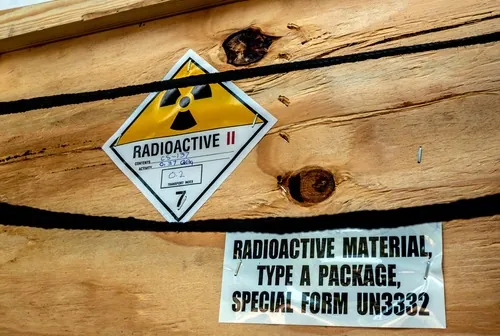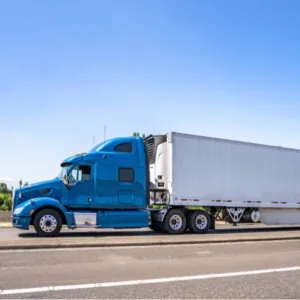
Shipping Hazardous Items: What You Need to Know
From classification and freight requirements to DOT regulations and hazard markings, ensure your business navigates shipping hazardous materials effectively.
Many important factors go into safely shipping hazardous items. Depending on the freight your small or medium-sized business produces, your shipment may require special shipping needs or will require classification as a hazardous item. Shipping hazardous items is an entirely different scenario than other standard freight pieces. Here’s a breakdown of how to correctly ship hazardous items.
Thousands of businesses trust FreightCenter to move their freight faster, smarter, and cheaper! From unbeatable rates to top-notch service, our customers are raving about their shipping success.
See why they keep coming back!
Award-Winning Service, Trusted by Shippers Everywhere!
- 2021, 2017 & 2016 Food Logistics’ Top Green Providers
- 2021 & 2018 Supply & Demand Chain Executives’ Pros to Know: Matthew Brosious
- 2020 & 2019 Top Food Logistics’ 3PL & Cold Storage Provider Award
- 2020 & 2019 Business Observer’s Top 500 Companies on the Gulf Coast
- 2020 & 2017 SmartWay® Transport Partner
- 2020 & 2017 Food Logistics’ Champions: Rock Stars of the Supply Chain
- 2020 Best of Palm Harbor Awards for Local Businesses
- 2017 Green Supply Chain Award from Supply & Demand Chain Executive
- 2017 Tampa Bay Business Journal Heroes at Work
- 2016, 2015, & 2012 Food Logistics Top 100 Software and Technology Providers
- 2013 Tampa Bay Business 100 by Tampa Bay Business Journal
- 2013 Top 100 Great Supply Chain Partners by SupplyChainBrain
- 2012 TIA Samaritan Award Honorable Mention
- 2012, 2011 & 2010 TBBJ Fast 50 Recipient
- 2013, 2011, & 2010 Diversity Business Top Businesses

Why Use FreightCenter
- Extensive Carrier Network: FreightCenter partners with many carriers and diverse transportation options.
- Advanced Technology: FreightCenter’s technology platform enables easy online booking, tracking, and management of shipments. Customers can get instant quotes, book shipments, and monitor freight in real-time.
- Customized Solutions: FreightCenter offers tailored shipping solutions to meet the unique requirements of different industries and businesses. They can handle specialized freight, high-value shipments, and complex logistics challenges.
The term HAZMAT is an abbreviation for “Hazardous Materials.” The main contrast between hazardous shipping items and other kinds of freight is how it is defined and classified. There are essentially two steps of “classification” for hazardous materials. They include organizing the type of hazardous material and its freight class. The U.S. Department of Transportation (DOT) has specific rules for shipping hazmat items. They classify these risky shipments into nine classes:
- 1: Explosives
- 2: Gases
- 3: Flammable and Combustible Liquids
- 4: Flammable Solids
- 5: Oxidizing Substances, Organic Peroxides
- 6: Toxic and Infectious Substances
- 7: Radioactive Items
- 8: Corrosives
- 9: Diverse Hazardous Items
Most of these classes also contain class divisions for more specific items. The DOT also provides a Hazardous Materials Markings, Labeling, and Placarding Guide that hazmat shippers should familiarize themselves with. These risky items are also determined by a list of levels. The National Fire Protection Association (NFPA) rates them here in the U.S. These levels are:
- Red – Flammable
- Blue – Health Hazard
- Yellow – Instability Hazard
- 4 – Ranges from Lethal to Explosive
- 3 – Ranges from Permanent Injury to Explodes
- 2 – Ranges from Temporary Injury to Violent Chemical Change
- 1 – Ranges from No Hazard to Stable
To create value for our customers by delivering customized shipping solutions that meet their unique needs and to fulfill shipping demands from simple to complex with expertise, guidance and ingenuity.
LTL shipping involves combining multiple small shipments from different customers onto one truck, allowing each customer to share the shipment cost. Trust the experts at FreightCenter to give you the best prices and the most comprehensive options for all your LTL freight shipping needs.
Truckload shipping, also known as full truckload (FTL), is a transportation option for freight that requires the entire trucks trailer space. Unlike LTL shipping, FTL shipping is reserved for larger commodities that exceed LTL weight and size limits, typically weighing more than 20,000 pounds or having dimensions that exceed 12 feet in length, 8 feet in width, and 8 feet in height. We deliver optimized solutions for full or partial truckloads and competitive dry van, flatbed, and refrigerated freight pricing. We can cover your full truckload shipping needs.
Nationwide Expedited Trucking services move your freight securely and rapidly. Your freight requires fast delivery; our freight shipping experts can get your shipment fast, whether in one large box or a full truckload.
Specialized is a transportation option for items that require specialized handling, equipment, or shipping conditions. Specialized shipments may include high-value cargo, oversized cargo, or cargo that require temperature-controlled transportation. The most reliable Specialized Freight Services rates from all the top carriers are just a few steps away. From white glove service to international shipping, we've got you covered.

We’ve been noticing businesses that have shifted their creation to making essential items like hand sanitizer. For example, distilleries have begun producing hand sanitizer with their supply chain assets. Hand sanitizer falls under the classification of hazmat. Businesses and organizations that make it will possibly be shipping hazmat items for the first time.
Hand sanitizer is a hot commodity right now. Similar to when the fireworks season starts. Therefore, distributors and supply chain managers must get the solutions they need, especially if they are shipping hazmat items that they are not used to.
That’s where FreightCenter comes in. We have over 20 years of handling hazmat shipments. FreightCenter knows the ins and outs of the business and has the connections shippers need to keep things going. Are you new to shipping hazmat items, or have you done so before? Whether or not, it’s crucial to partner with a freight broker who understands your business and shipping needs. We dedicate ourselves to providing the best results to our shippers, no matter the challenge.
We can help with your hazmat shipments. If you want to speak with one of our experts, call us at 800-716-7608. Get started with a free quote today.
Shipping furniture and office supplies involves unique challenges and considerations. Here are some frequently asked questions (FAQs) about furniture and office shipping:
Shipping Hazardous Items: What You Need to Know faq’s
Q. What is the Best Way to Ship Furniture and Office Supplies?
Hazardous substances risk health, safety, property, or the environment. These can include chemicals, flammable liquids, explosives, corrosives, and radioactive materials.
Q. What Regulations Govern the Shipping of Hazardous Items?
Shipping hazardous items is regulated by various bodies to ensure safety. International regulations are set by the International Air Transport Association (IATA), the International Maritime Organization (IMO), and the United Nations (UN). In the United States, the Department of Transportation (DOT), the Environmental Protection Agency (EPA), and the Occupational Safety and Health Administration (OSHA) oversee these regulations.
Q. How Should Hazardous Items Be Packaged?
Packaging hazardous items requires careful attention to detail. They should be contained in UN-certified containers specifically designed for hazardous materials. Packages must be clearly labeled with the appropriate hazard class labels and handling instructions, and all containers must be securely sealed to prevent leaks.
Q. What Documentation is Required for Shipping Hazardous Items?
Proper documentation is crucial when shipping hazardous items. Shipping papers must describe the hazardous materials, their hazard class, UN number, packing group, and quantity. A Material Safety Data Sheet (MSDS) should also be included, providing detailed information about the material’s properties and handling requirements. For air shipments, a Declaration of Dangerous Goods is also necessary.
Q. How are Hazard Classes Determined?
Hazard classes are determined based on the material’s properties. These classes include explosives, gases, liquids, flammable solids, oxidizers and organic peroxides, toxic and infectious substances, radioactive materials, corrosives, and miscellaneous dangerous goods.
Q. What Training is Required for Handling Hazardous Shipments?
Personnel involved in shipping hazardous materials must receive training on regulations and compliance, packaging and labeling, emergency response procedures, and safety measures to ensure proper handling and adherence to legal requirements.
Q. What Are Common Challenges in Shipping Hazardous Items?
Shipping hazardous items comes with several challenges, including regulatory compliance to avoid fines and legal issues, ensuring safety to prevent accidents and exposure, maintaining accurate documentation to avoid delays, and managing higher shipping costs due to specialized handling and packaging requirements.
Advantages

Cost Efficiency
FreightCenter compares rates and services to find the most cost-effective options.

Comprehensive Services
A wide range of services are available with FreightCenter to find the best solutions for specific needs.

Simplified Claims Processes
FreightCenter assists with issues such as damage or loss, making it easier for you to resolve problems.





